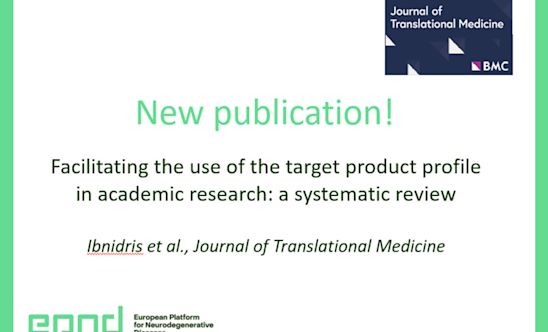Publication in the Journal of Translational Medicine
07/29/2024

Target Product Profiles (TPPs) are widely used in industry to align product development with user needs, but their use in academic research remains limited. A new systematic review published by EPND partners and collaborators in the Journal of Translational Medicine highlights how TPPs could help academic teams develop more targeted and impactful innovations.
The review, which was led by Prof. Marina Boccardi (DZNE) with Aliaa Ibnidris as first author, analysed 138 peer-reviewed publications that developed TPPs across a range of health conditions. Most focused on infectious diseases, while areas with major unmet needs were strikingly underrepresented. Only one TPP was found related to dementia.
The review was based on structured searches across four major biomedical databases, supplemented by grey literature and expert interviews. The authors also consulted senior professionals from the pharmaceutical and regulatory sectors, whose insights helped contextualise findings and highlight best practices.
Although 92% of the papers proposed a new TPP, the features they included varied widely. Some outlined just a few core elements, while others detailed over 40. Common features included intended use, drug stability, and validation requirements. However, the majority of papers did not report how their TPPs were developed, making it difficult to assess quality or reproducibility. More than half of the included papers were led by academic authors, but few involved collaboration across sectors, and even fewer reported engagement with end users or patients.
To address this, the study proposes a set of considerations to guide future TPP development in academia. By adopting clearer structures and sharing transparent methods, researchers can make better use of TPPs to support innovation, especially in fields like neurodegeneration where strategic planning and cross-sector collaboration are critical.
Access the article on the publisher's website by clicking here.
Download the article:
Download